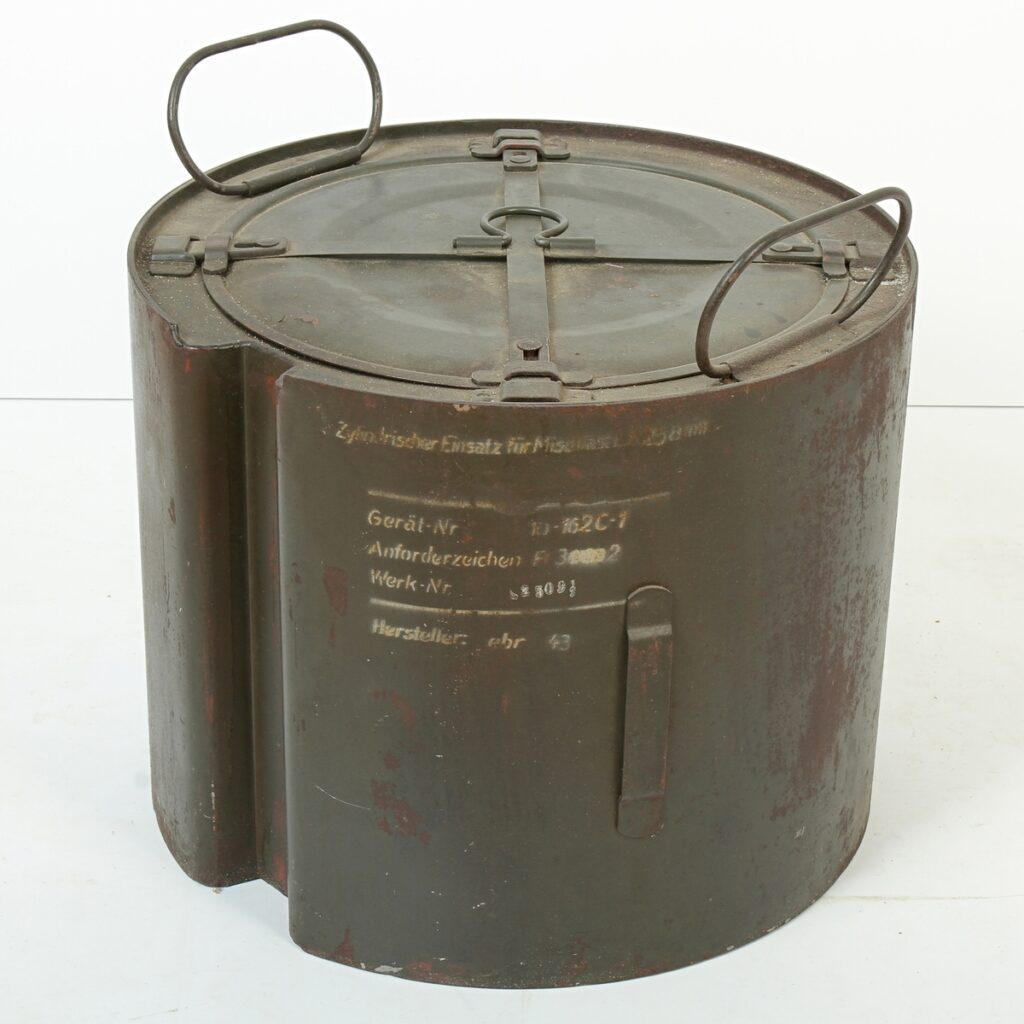
07 Case from German Parachute Container Mischlastabwurfbehälter, 1943
Fotogalerie
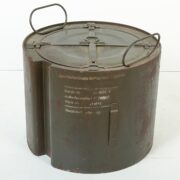
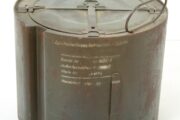

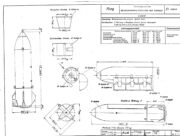
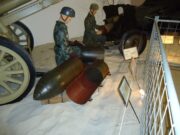

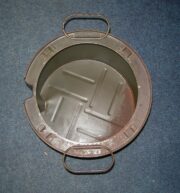
During January 1943, when it lost the last suitable airfield for supply and evacuation of the wounded, the agony of the German 6th Army of General Friedrich Paulus culminated in the Stalingrad cauldron. The only option seemed to be the effort to drop the necessary material from the air using parachute containers.
It was a cylindrical body with a diameter of 350 mm made of sheet steel in the shape of an aerial bomb with a door, which could be thrown from the aircraft either from conventional hangers, or simply thrown manually from the open doors of the transport aircraft. After being thrown, the container was braked by its own parachute, which was released by a pre-ordered timing mechanism and fell freely to the ground without damaging the cargo being carried. In the body of the container with a length of 1,650 mm, four independent self-closing cylindrical boxes were stored, in which it was possible to store smaller material, such as ammunition, food or medicine. The parachute was located in the rear part, which was equipped with stabilizing surfaces, enabling a more accurate throw.
The fact that this exhibit played a role in the very successful film "Stalingrad" in the nineties of the last century will surely serve as an interesting fact. There, after being thrown from a Junkers Ju 52/3m, it sank and was received by starving and frozen German soldiers. Instead of finding food or medicine, iron crosses, intended for distinguished defenders of the cauldron, spilled from his bowels.
Aktuálně
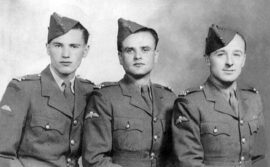
Tak trochu zamrzlé spojení

Válečný veterán Petr Matouš pokřtil v Armádním muzeu Žižkov svou knihu. Patronkou je i ministryně obrany Jana Černochová

Call for Papers: Tváře brannosti – branná výchova, branné spolky a civilní obrana v dějinách

Richard Tesařík / 3. 12. 1915 - 27. 3. 1967








